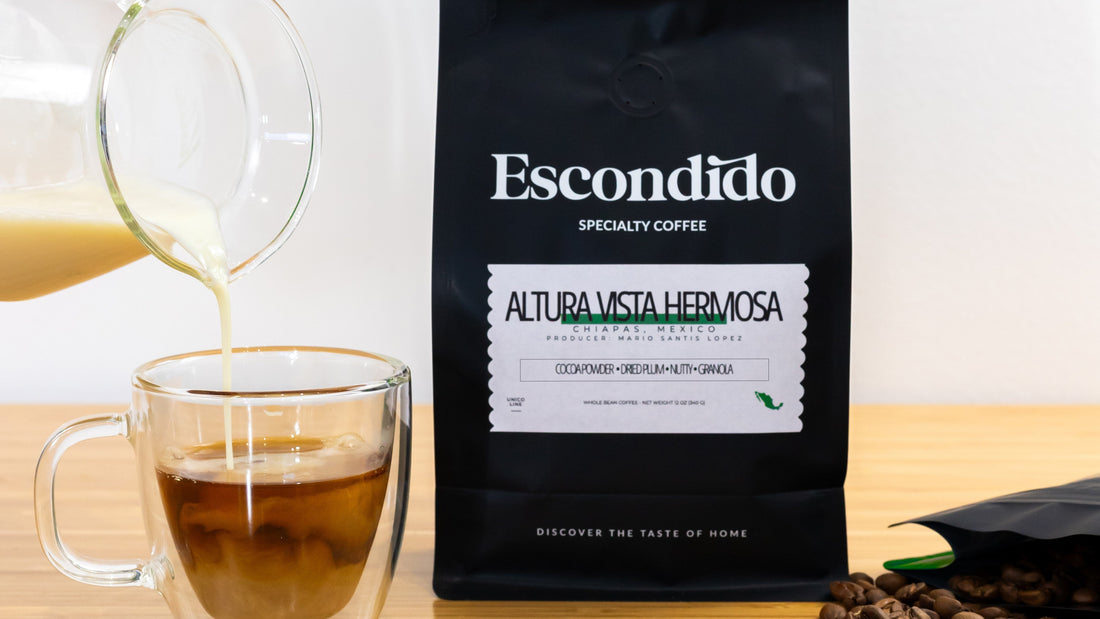
What Does “Body” in Coffee Really Mean? A Guide to One of the Most Misunderstood Tasting Terms
Share
What Does “Body” in Coffee Really Mean? A Guide to One of the Most Misunderstood Tasting Terms
When you hear someone describe a coffee as “full-bodied,” what comes to mind? Bold taste? Heavy roast? The truth is more nuanced. In coffee tasting, “body” refers to the mouthfeel, or how the liquid feels on your palate—not its strength or flavor.
This concept is a cornerstone of specialty coffee cupping, alongside acidity, aroma, and sweetness. So let’s dig in.
What Is the “Body” of a Coffee?
The term ‘body’ in coffee refers to the physical properties or mouthfeel of the drink, including weight, texture, and thickness.
It’s easiest to compare coffee body to dairy: skim milk feels watery, while whole milk feels thicker and creamier. Coffee is the same way—some brews feel light and tea-like, others coat your mouth like syrup.
Types of Coffee Body
Depending on origin, roast, and processing, body can fall into a few categories:
Light-Bodied Coffee
These coffees tend to feel more like tea—delicate and clean on the palate. Examples: Washed Ethiopian or Kenyan coffees.
Medium-Bodied Coffee
Balanced and smooth, medium-bodied coffees are what most people are familiar with. Think Colombian or Peruvian beans. Flor del Norte, our newest release from Cajamarca, Peru, is a perfect example. Its tasting notes of caramel, fudge, cinnamon, orange, and walnut are supported by a rounded, satisfying body.
Full-Bodied Coffee
Full-bodied coffees feel heavier in the mouth, with a texture that lingers on the tongue. Examples: Natural-processed coffees from Brazil or Sumatra.
What Influences Coffee Body?
The body of a coffee is shaped by multiple factors:
1. Coffee Origin
Geography, climate, and soil composition have a big impact on the chemical makeup of the bean, which translates to body.
- Latin America (Peru, Brazil): medium to full body
- Africa (Ethiopia, Kenya): typically lighter body
- Asia-Pacific (Sumatra, Java): full, syrupy body
2. Altitude
Higher elevations produce denser beans, often resulting in cleaner, lighter body with higher acidity.
Flor del Norte is grown at 1,800 MASL, contributing to its bright and balanced profile.
3. Processing Method
Washed coffees have a clean, bright profile with lighter body, while natural processing often adds weight and fruitiness.
- Washed = lighter body
- Natural = heavier, fruity body
- Honey = in-between
4. Roast Profile
As roast level increases, coffee develops more soluble oils and breaks down fibrous cellulose, contributing to heavier body.
Medium roasts like Flor del Norte tend to offer a balanced mouthfeel—not too heavy, not too light.
5. Brewing Method
Different brewers retain or filter out oils and particles that affect body:
- French Press/AeroPress = Full
- Pour Over/Chemex = Light
- Espresso = Thick, creamy
- Cold Brew = Heavy, smooth

Why Body Matters in Coffee Tasting
Body affects how flavor lingers and unfolds. It adds structure and depth.
A heavier body allows flavors like chocolate or nuts to develop more fully on the tongue.
A light-bodied coffee may emphasize floral or citrus notes, while a fuller-bodied coffee supports darker, deeper flavors.
How to Identify Body in Your Cup
- Sip slowly and pay attention to mouthfeel.
- Swish the coffee gently around your mouth.
- Compare two coffees side by side—say, a washed Ethiopian versus a natural Brazilian.
You’ll quickly feel the difference.
At Escondido Specialty Coffee, We Roast With Body in Mind
We choose origins and roasts that highlight each coffee’s natural profile.
Looking for something light and delicate? Try Ethiopia Yirgacheffe.
Want richness and boldness? Go for The Escondido Blend or our Espresso Reserve Blend.
In the middle? Our newest release, Peru Cajamarca Flor del Norte, brings the best of both worlds:
- Medium roast
- Grown at 1,800 MASL
- Washed process
- Varietals: Catimor, Caturra, Bourbon, and Typica
- Flavor notes: Caramel, fudge, cinnamon, orange, and walnut
Each bag is roasted fresh to order in small batches to preserve the integrity of its mouthfeel.